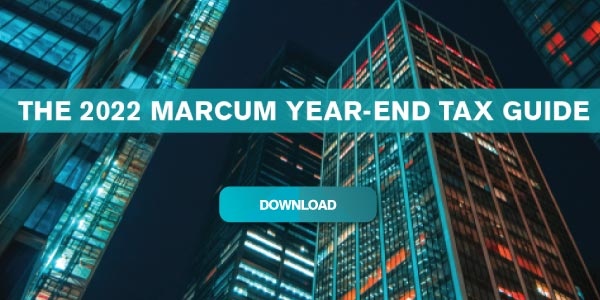Research and Development (R&D) Tax Credit Applicability and Benefits
The federal Research & Development (R&D) tax credit is one of the most advantageous but underutilized incentives available to small and mid-sized businesses. Originally introduced as a temporary measure in the Economic Recovery Tax Act of 1981 (ERTA), it has remained part of the tax code ever since benefiting thousands of companies in diverse industries. Yet, many more do not take advantage of the credit’s potentially significant benefits.
While over $10 billion in tax savings is achieved annually by U.S. businesses claiming the credit, data from the National Science Foundation indicate that another $4 billion unclaimed R&D tax credits are untapped.
Some of this may be due to misconceptions by many small- and mid-sized companies and their tax advisors, including the following:
- The R&D tax credit will not help the taxpayer because the company is not profitable;
- The R&D tax credit is only for big companies; or
- The R&D tax credit is not important since the taxpayer already gets a deduction.
In actuality, the R&D tax credit represents a dollar-for-dollar reduction in income tax liability. It can provide significant benefits to taxpayers but must be claimed annually; it is not granted automatically.
General Guidelines
Industries where R&D qualified expenses often occur include, but are not limited to:
- Manufacturing & Distribution
- Software & Technology
- Construction
- Food & Beverage
- Consumer Products
- Cannabis
- Healthcare
General Calculation
The R&D tax credit is calculated by determining the amount of qualified research expenses (QREs) for the company’s current and prior three tax years. QREs are made up of wages, supplies used in the R&D development process, and 65% of third-party contract researchers.
In order to meet the definition of qualifying research expenditures, research activities are required to take place in the U.S. and must satisfy the Internal Revenue Service’s (IRS) “Four-Part Test”:
- The work is being performed to develop new or improved business component (product, process, technique, formula, invention, or computer software component).
- The activities are performed to discover information that is technological in nature. The activities involve physical, biological, engineering, or computer sciences.
- The research is performed to eliminate technical uncertainty, determine if a desired result could be achieved, how to achieve it, or determine the specific design of a product.
- The activities will include a process of experimentation involving identification of the technical uncertainties, alternatives to consider in eliminating the uncertainties and a process for evaluating alternatives.
Changes under several recent legislative bills have made the R&D tax credit even more lucrative.
2015 Protecting Americans from Tax Hikes (PATH) Act
A. Payroll Tax Relief
The PATH Act allows the R&D income tax credit to be applied against the employer’s OASDI (Social Security) portion of payroll taxes for “qualified small businesses.” A qualified small business is defined as one with less than $5 million in gross receipts per year and no gross receipts for any tax year before the five-tax-year period ending with the current tax year. Gross receipts are determined under Secs. 448(c)(3)(B), (C), and (D). There is no de minimis amount for the gross receipts. Therefore, a dollar of interest income is defined as a gross receipt. This single dollar begins that five-year time range.
The payroll credit is limited to $500,000 (formerly $250,000) per year for up to five years, and any unused portion can be carried forward to future years. The tax credit may also be claimed if the business uses a certified Professional Employer Organization (PEO). This provision allows qualified small businesses to utilize the R&D tax credit against payroll taxes, where they might not previously have had the opportunity to utilize the credit if the company did not yet have taxable income.
B. Alternative Minimum Tax (AMT) Relief
Another benefit added as part of PATH is the ability to utilize the credit to offset the AMT (Alternative Minimum Tax) for taxpayers with $50 million or less in average annual gross receipts over the three preceding tax years.
2017 Tax Cuts and Jobs Act (TCJA)
A. Increased Credit Value
The TCJA effectively increased all R&D tax benefits by 21 percent after 2017, due to an increase in the Section 280C adjustment from 65 percent to 79 percent.
B. AMT Impact
The TCJA also expanded the availability of the R&D tax credit for certain taxpayers. For corporate taxpayers, it eliminated the Sec. 55 AMT and amended Sec. 38(c)(6) to treat a corporation as having zero tentative minimum tax. These amendments removed a hurdle that previously prevented some corporate taxpayers from using credits under Sec. 41(a), due to the Sec. 38(c) tentative minimum tax limitation.
However, all taxpayers—both corporate and individual—are subject to a minimum tax requirement specifying that a credit cannot exceed the excess of net income tax above 25 percent of the taxpayer’s net regular tax liability above $25,000 (Section 38(c)(1)).
C. Section 174 R&D Expense Capitalization
After December 31, 2021, the TCJA eliminates the option to deduct R&D expenditures in the current tax year. The new tax treatment requires taxpayers to capitalize and amortize U.S. and foreign-based R&D expenses over five and 15 years tax years, respectively.
The TCJA also changed “research or experimental expenditures” to “specified research or experimental expenditures,” and added a special rule stating that any amount paid or incurred in connection with the development of software is treated as a “specified research or experimental expenditure.” This may restrict the ability to deduct software development expenditures post-December 31, 2021.
The new Sec. 174 amortization cost treatment is distinct from the Sec. 41 R&D tax credit. Sec. 41 qualified expenses may still be taken on the qualified amounts, including direct costs associated with research and development such as wages, consumable supplies, and contract research amounts. Sec. 174’s definition is more expansive than Sec. 41’s. The broader Sec. 174 definition focuses on R&D deductions that may include direct and indirect costs, such as legal and overhead. These indirect costs are not eligible for Sec. 41 treatment.
The new amortization requirement will not impact the R&D tax credit. However, taxpayers and tax professionals both need to remember that expenses qualifying for the R&D tax credit may also become a Sec. 174 cost.
Those taxpayers who have never taken the R&D tax credit may want to start. The IRS has the authority to re-classify expenses as Sec 174, requiring the amortization, thus increasing taxable income. The R&D tax credit may help to mitigate the increased tax liability caused by the Sec. 174 amortization.
Inflation Reduction Act (IRA) of 2022
Effective for tax years beginning on or after January 1, 2023, the IRA increases the annual payroll offset for the R&D tax credit from $250,000 to $500,000. In addition, qualified small businesses can apply the R&D tax credit payroll offset against the employer’s 6.2% Social Security tax plus 1.45% Medicare tax, for a total of 7.65% of payroll tax liability.
Chief Counsel Memorandum (CCM) Impact on Amended Returns
On October 15, 2021, the IRS issued CCM 20214101F discussing new guidelines that clarify procedural instructions for eligible taxpayers to claim the R&D tax credit, while reducing the number of disputes over such claims.
The CCM identifies the information a taxpayer must include in an administrative claim for refund or credit (“refund claim”), for the refund claim to be valid under Treas. Reg. Section 301.6402- 2(b)(1).
The IRS does provide a transition period giving taxpayers 45 days to “perfect” an insufficient claim before the IRS makes a final determination, if all the requested information has been provided. The IRS has not specified whether they will provide taxpayers details regarding what is lacking in the claim.
A valid claim only means a taxpayer provided the requested documents in the CCM. The validity of a claim does not preclude the IRS from denying the request or auditing the work done.
The IRS has extended this one-year transition period to January 10, 2024.
Beyond Federal Credits
In addition to the federal credit, many states have their own R&D tax credits. Effectively using both federal and state credits can help small and mid-sized companies increase cash flow during their early growth years, when cash is preeminently king.
Contact your Marcum tax professional for assistance with determining eligibility and applicability.







